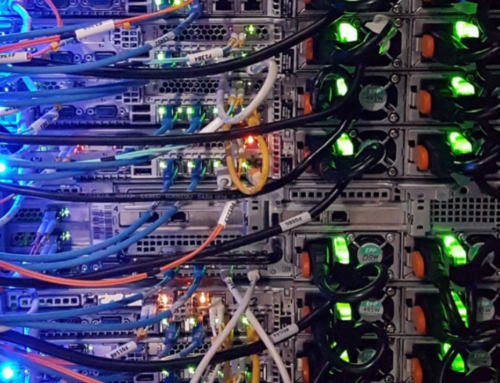According to the FBI, cybercrimes have increased by 300% since the COVID-19 pandemic began. While it can seem like more and more crises are digital in nature, there is still plenty to be feared from physical damage and attack. When it comes to the subject of data center environmental control, perhaps no crisis is more destructive than fire.
Fire safety can be broken down into three broad subjects: fire prevention, which involves systems and protocols to avoid fire in the first place; fire suppression, which means using materials and systems that are resistant to flame; and fire protection, which involves last-resort systems like fire sprinklers.
In this article, we discuss data center environmental control options you can use to prevent fire from damaging your data center. To learn what strategies you should be following for your data center, keep reading.
Use a Double-Interlock Pre-Action Sprinkler System
When it comes to fire, the sprinkler system is usually your last line of defense, especially when it comes to data center construction services. Water is damaging to electronic components, so having a sprinkler system malfunction or go off at the wrong time can result in costly damage and downtime. Still, sprinkler systems are necessary in the event that a fire gets out of control. What can you do to get the best of both worlds?
Fortunately, you have better options. One of them is the double-interlock pre-action sprinkler system. Unlike standard sprinkler systems that constantly contain water inside the suspended pipes, in a pre-action double-interlock system the pipes remain empty until a fire is detected. Specifically, a detector actuation — typically a smoke detector — and a sprinkler actuation must both take place before water fills the pipes. This significantly lessens the chance that a false alarm would cause the sprinklers to activate and prevents the possibility of a leak causing water damage to your servers.
Maintain Adequate Building-Level Fire Protection
While sprinklers might make up your last line of defense against fire, your first line of defense is the building-level fire protection system. The main goal of this system is to protect the building and staff from fire, which in turn helps prevent a fire from ever reaching the server rooms.
Sprinklers and handheld fire extinguishers are the most common systems of building-wide fire protection. Handheld extinguishers should typically be placed every 3,000 square feet, specifically if there are class A combustible materials in the work area. Passive fire protection is also recommended, which means using firewalls and flame-retardant floor assemblies that delay the spread of fire if one starts. While you always want to ensure your building conforms to local fire codes, it is never a bad idea to go above and beyond what’s necessary.
Apply Fire Protection at the Server Rack Level
After ensuring adequate building-level fire protection, the next layer of protection is your room-level fire protection. This is where things like clean agent gas systems and sprinkler systems come into play. But to ensure adequate fire suppression and prevention, rack-level protection is a must.
At this level, fire protection is all about protecting certain equipment and limiting damage when a fire starts. As we mentioned, methods of fire protection like sprinklers can cause significant damage to servers, requiring expensive repairs afterward. A pre-engineered automatic fire suppression system is one way to control fires before the sprinkler system becomes necessary. This system will detect a fire within seconds, then suppress it before the sprinkler system has time to activate.
The pre-engineered system involves a network of fire-detecting tubing that runs throughout individual racks, then connects to a cylinder with flame-stopping clean agent. In the event a fire starts somewhere at the rack level, the detection tubing activates the clean agent to suppress the fire directly at its source. The clean agent protects equipment from further damage, while also isolating problem areas and treating them individually, as opposed to flooding the whole room with water. Because it protects against both fire and water damage, this is a critical aspect of data center environmental control.
Data center environmental control goes far beyond air conditioning for data centers. For all your mission critical support solutions, including rack-based fire suppression, contact LDP data center services today.






